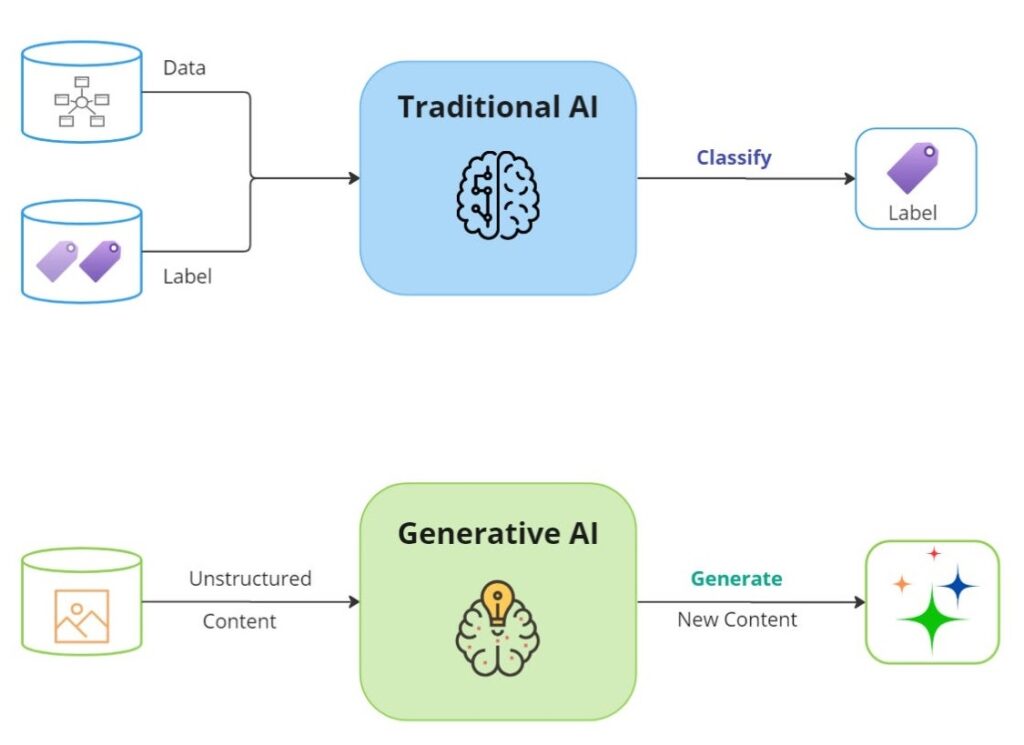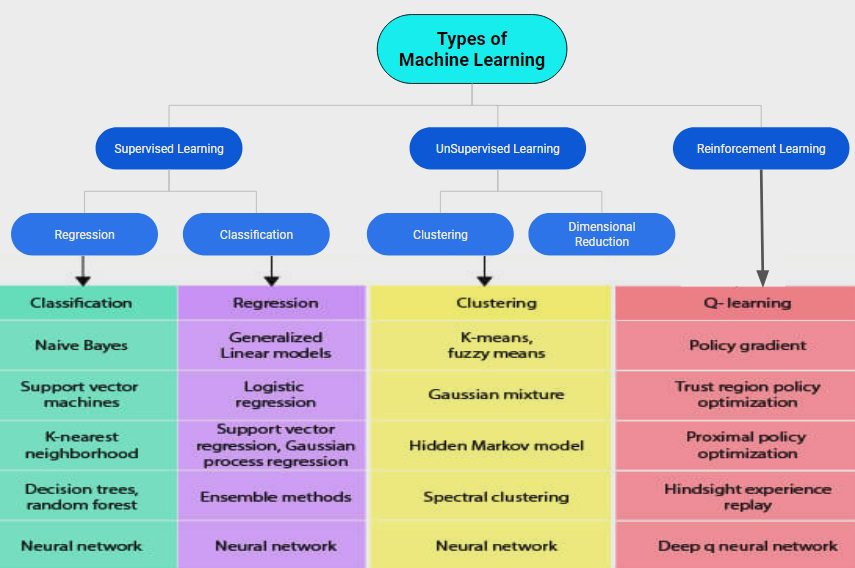Machine learning, a subset of artificial intelligence (which was born with a set of business rules), is all about giving machines the ability to act and make data-driven decisions rather than being explicitly programmed to carry out certain tasks. Algorithms are trained to identify patterns and features from massive amounts of data which they then use to predict outcomes. With various types dominating different sectors, from finance to healthcare, understanding these types can significantly enhance how you approach problems and implement solutions.
| Traditional AI | Supervised ML | Unsupervised ML | Reinforcement ML |
|---|---|---|---|
| Definition | Learns by using labelled data | Trained using unlabelled data without any guidance. | Works on interacting with the environment |
| Type of data | Labelled data | Unlabelled data | No – predefined data |
| Type of problems | Regression and classification | Association and Clustering | Exploitation or Exploration |
| Supervision | Extra supervision | No supervision | No supervision |
| Algorithms | Linear Regression, Logistic Regression, SVM, KNN etc. | K – Means, C – Means, Apriori | Q – Learning, SARSA |
| Aim | Calculate outcomes | Discover underlying patterns | Learn a series of action |
| Application | Risk Evaluation, Forecast Sales | Recommendation System, Anomaly Detection | Self Driving Cars, Gaming, Healthcare |
Supervised Learning
Supervised Learning deals with two types of problem- classification problems and regression problems. When you’re working with labeled data, supervised learning is your go-to technique. It involves mapping input data to known labels. Think of it as having a guide that helps the algorithm predict or classify new examples based on learned relationships. You can use Python libraries like Scikit-learn, TensorFlow, or PyTorch to implement models like decision trees, linear regression, or neural networks. These tools help in a variety of tasks such as predicting customer behavior or classifying emails as spam.
Unsupervised Learning
This learning algorithm is completely opposite to Supervised Learning. In short, there is no complete and clean labelled dataset in unsupervised learning. If you have data without predefined labels, unsupervised learning is the technique to use. It analyzes data patterns without any guidance on what outputs might be correct. For a learning agent, there is always a start state and an end state. However, to reach the end state, there might be a different path. This type is ideal for discovering hidden structures in data. Common algorithms include k-means clustering and principal component analysis, useful in segmenting customers or reducing the dimensions of data to highlight trends. Python libraries like Scikit-learn and TensorFlow also provide support for these algorithms, allowing you to dive into complex data sets and identify natural groupings or anomalies.
Reinforcement Learning
In scenarios where an algorithm learns through trial and error, using feedback from its own actions and experiences, reinforcement learning comes into play. Unlike supervised learning which learns from mistakes after the fact, reinforcement learning adjusts its strategy in real-time, aiming to maximize the reward. It’s commonly used in robotics, video games, and navigation systems. Libraries such as OpenAI Gym or TensorFlow offer frameworks to implement learning agents that can improve autonomously through interaction with their environment .

Generative AI: A Different Approach
Conversely to the Traditional AI we described in the previous three paragraphs, Generative AI, which includes models like Generative Adversarial Networks (GANs), differs from the previous types by not just analyzing data but also generating new data that mimics the learned information. This can be used for creating realistic images, enhancing old photos, or even generating music. While it leverages some of the same principles as supervised and unsupervised learning, its creative potential sets it apart as it doesn’t just make decisions or predictions but creates new, previously unseen outputs such as for the popular GPT (Generative Pretrained Transformers) Large Language Models (LLM)s.


